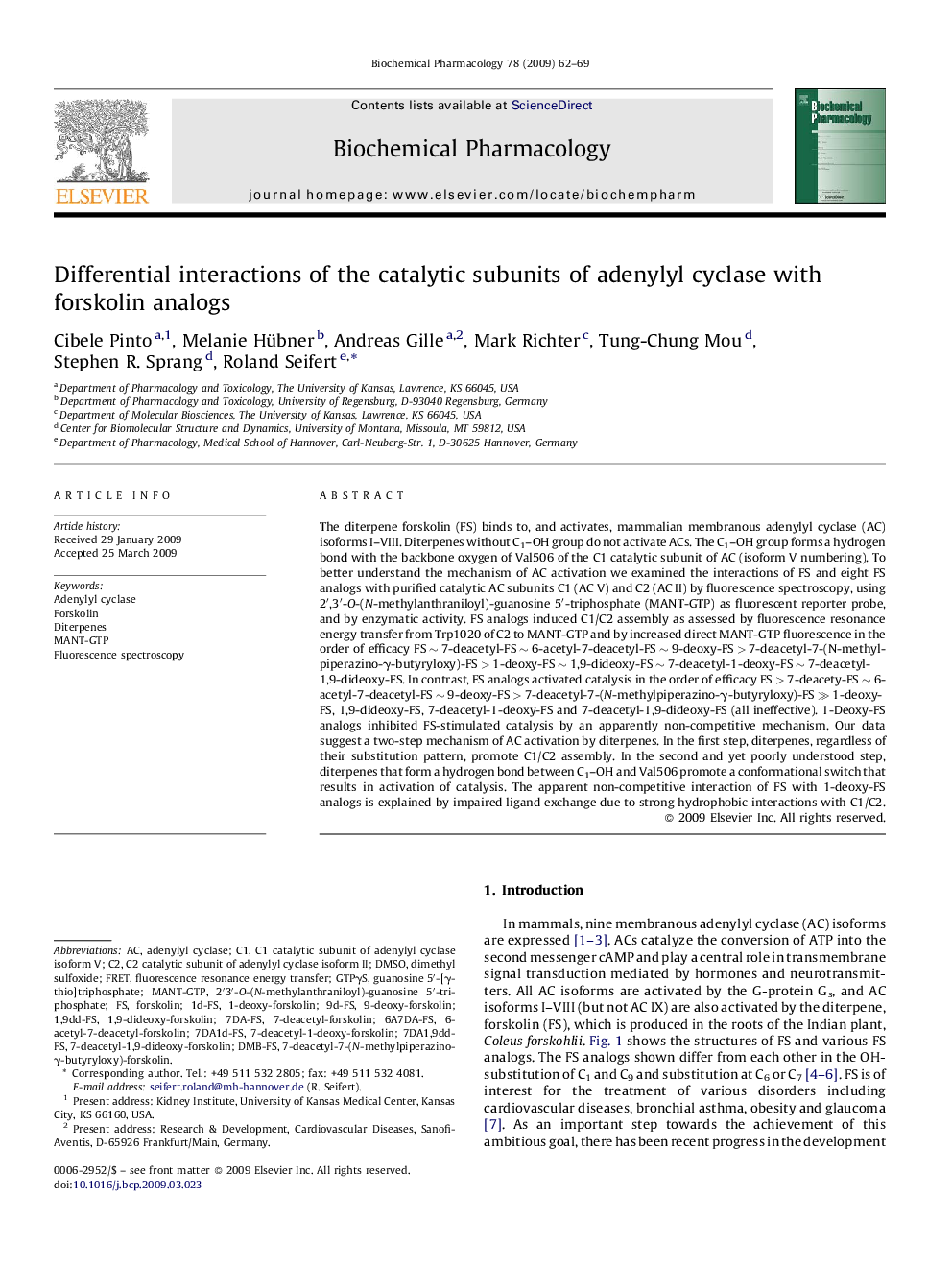| کد مقاله | کد نشریه | سال انتشار | مقاله انگلیسی | نسخه تمام متن |
|---|---|---|---|---|
| 2514329 | 1118462 | 2009 | 8 صفحه PDF | دانلود رایگان |

The diterpene forskolin (FS) binds to, and activates, mammalian membranous adenylyl cyclase (AC) isoforms I–VIII. Diterpenes without C1–OH group do not activate ACs. The C1–OH group forms a hydrogen bond with the backbone oxygen of Val506 of the C1 catalytic subunit of AC (isoform V numbering). To better understand the mechanism of AC activation we examined the interactions of FS and eight FS analogs with purified catalytic AC subunits C1 (AC V) and C2 (AC II) by fluorescence spectroscopy, using 2′,3′-O-(N-methylanthraniloyl)-guanosine 5′-triphosphate (MANT-GTP) as fluorescent reporter probe, and by enzymatic activity. FS analogs induced C1/C2 assembly as assessed by fluorescence resonance energy transfer from Trp1020 of C2 to MANT-GTP and by increased direct MANT-GTP fluorescence in the order of efficacy FS ∼ 7-deacetyl-FS ∼ 6-acetyl-7-deacetyl-FS ∼ 9-deoxy-FS > 7-deacetyl-7-(N-methylpiperazino-γ-butyryloxy)-FS > 1-deoxy-FS ∼ 1,9-dideoxy-FS ∼ 7-deacetyl-1-deoxy-FS ∼ 7-deacetyl-1,9-dideoxy-FS. In contrast, FS analogs activated catalysis in the order of efficacy FS > 7-deacety-FS ∼ 6-acetyl-7-deacetyl-FS ∼ 9-deoxy-FS > 7-deacetyl-7-(N-methylpiperazino-γ-butyryloxy)-FS ≫ 1-deoxy-FS, 1,9-dideoxy-FS, 7-deacetyl-1-deoxy-FS and 7-deacetyl-1,9-dideoxy-FS (all ineffective). 1-Deoxy-FS analogs inhibited FS-stimulated catalysis by an apparently non-competitive mechanism. Our data suggest a two-step mechanism of AC activation by diterpenes. In the first step, diterpenes, regardless of their substitution pattern, promote C1/C2 assembly. In the second and yet poorly understood step, diterpenes that form a hydrogen bond between C1–OH and Val506 promote a conformational switch that results in activation of catalysis. The apparent non-competitive interaction of FS with 1-deoxy-FS analogs is explained by impaired ligand exchange due to strong hydrophobic interactions with C1/C2.
Using purified catalytic adenylyl cyclase subunits as model, this paper demonstrates differential interaction of forskolin analogs with the enzyme and provides evidence for a two-step activation process.Figure optionsDownload as PowerPoint slide
Journal: Biochemical Pharmacology - Volume 78, Issue 1, 1 July 2009, Pages 62–69